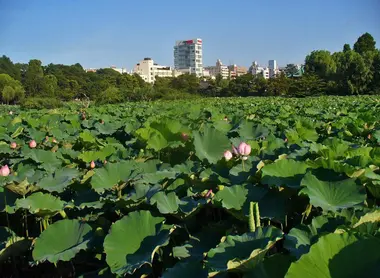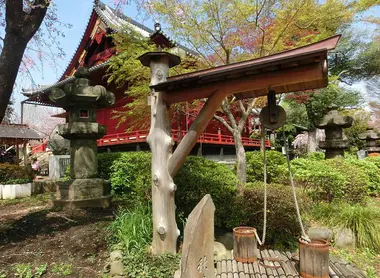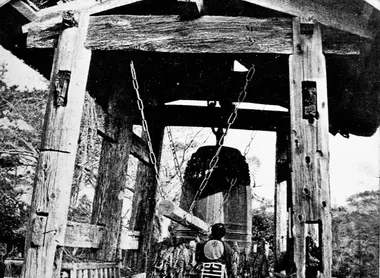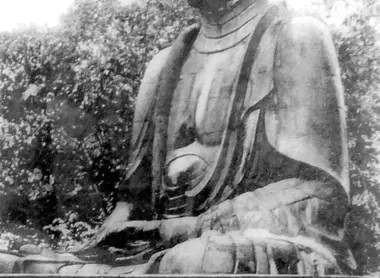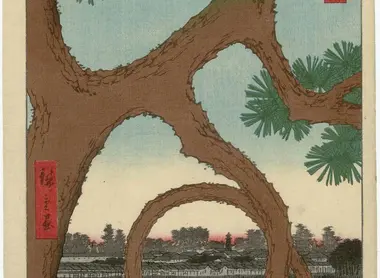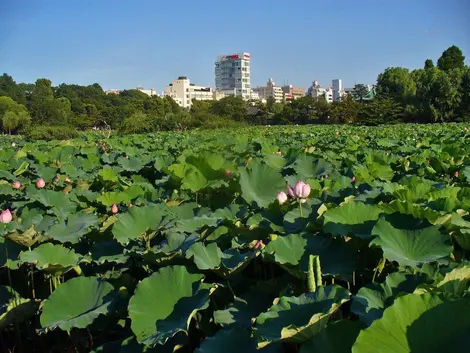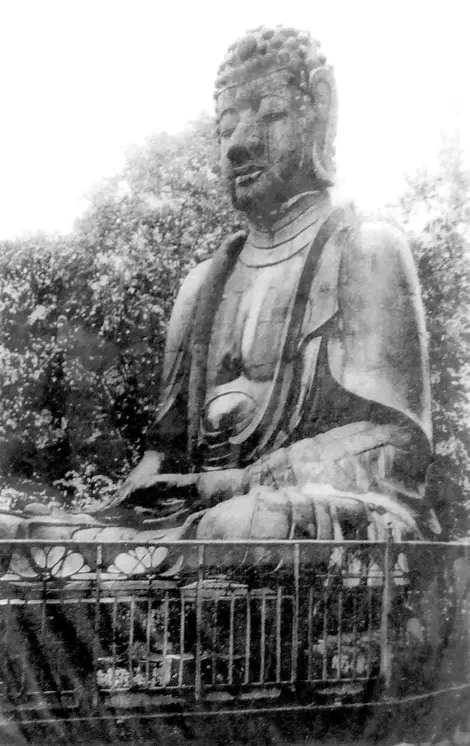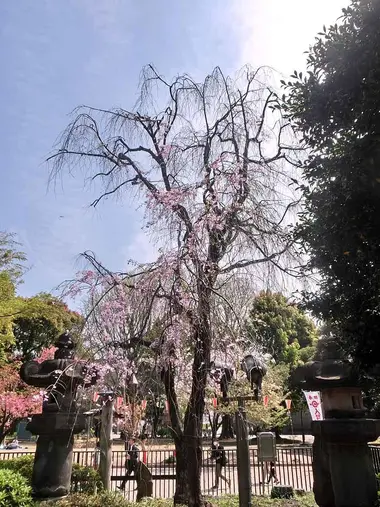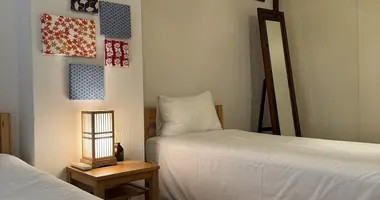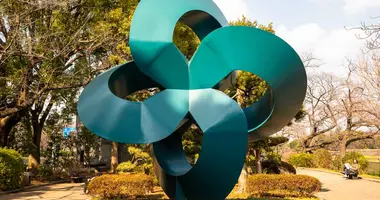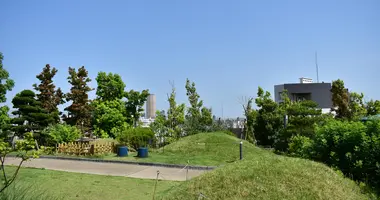Ueno Park under the microscope 上野公園の秘密
- Published on : 28/05/2018
- by : S.V.
- Youtube
Secrets of history
Ueno Park is one of the essential visits of the Japanese capital. It must be said that its many museums, its zoo, its cherry blossoms, its temples and sanctuaries, its lotus pond have something to seduce visitors. for the first time, you might well not pay attention to certain small yet meaningful details.
This visit of the park of Ueno with the magnifying glass tends to make you discover the small stories which make the greatHistory. Those refractory to history can be reassured. It is in no way a question of delivering a lecture or an exhaustive description of the places. Simply take advantage of this walk which highlights anecdotes or small events related to the Tokyo park .
Discover the Ueno district:
- Ueno, park and popular district
- Ueno natsu matsuri
- Ueno Park and its famous lotus pond
- Ueno Zoo
- The Tokyo National Museum
- Ameya Yokocho
1. The Shushiki cherry tree
Not far from Kiyomizu Kannon-do, one of the thousands of cherry trees in the park stands out. This one, called "Shushiki cherry tree", owes its nickname to a young 13-year-old poetess . In 1681, the young Ome Shushiki (1668-1725) composed a haiku which has remained famous: "Cherry blossoms near a well are in danger from drunken comrades" ( Idobata no sakura abunashi sake no yoi ). This poem expresses the fear of the young girl to see, during the hanami , the drunken men crushing the fragile tree and falling into the well. Ome Shushiki then attaches the strip of paper containing his poem to a branch. Upon reading it, the priest of nearby Kiyomizu Kannon-do is so greatly impressed that he provides her with a palanquin to return home. But the young girl takes advantage of her weakened father and is content to walk by his side. The story quickly spread among the people of Edo. Word of mouth does its work; transforming the facts and giving birth to a true legend . Ome Shushiki's father thus turns into an advanced palanquin bearer living with his daughter; the latter taking care of him all her life and studying poetry in her spare time. Ukiyo-e artists represent a virtuous Ome Shushiki, with unfailing loyalty. The poet, held up as a model of filial piety, left her name to the cherry tree that made her famous!
2. Moon Pine – Tsuki no matsu
In front of the Kiyomizu Kannon-do platform on stilts is a very strange pine tree, one of whose branches forms a perfect circle . The Tsuki no matsu or "moon pine" is a unique pine, shaped by the expert hands of a landscape craftsman in the Edo period and placed there by the priest Jigen Daishi, founder of Kanei-ji. Hiroshige immortalized it twice in his famous series of prints, the One Hundred Famous Views of Edo produced between 1856 and 1858. By its circular shape, the pine tree is associated with the full moon , a symbol of good fortune.
From the platform, through the curved branch, the Bentendre in the middle of the Shinobazu pond offers itself to you in a splendid and completely original perspective . Heavily damaged by a storm at the end of the Edo period, the pine was restored in 2012, thus reviving the magic of the spectacle of yesteryear. The curvature of moon pine is a feat that only a handful of landscape craftsmen are capable of achieving. Missing it during your visit to the park would deprive you of a centuries-old view.
3. Innsyoutei Restaurant
Behind the wooden facade of the Innsyoutei restaurant, hides a culinary adventure that has lasted for more than 140 years . When it opened in 1875, it was the favorite place for walkers in the park wishing to have lunch or drink tea. In order to preserve its authentic setting, the restoration of the establishment in 2003 incorporates materials from old buildings in Kyoto and Shiga prefectures. Through a wide bay overlooking the park, you can treat yourself to a timeless meal in a distinguished setting . Without prior reservation, you will have to be patient to taste kaiseki cuisine. .
Address: 〒110-0007 Tokyo, Taito, Uenokoen, 4−59
Hours: 11 a.m.-3 p.m. - 5 p.m.-11 p.m.
4. Ueno Time Bell – Toki no kane
In Jiro Taniguchi's manga Furari , the protagonist surveying Edo declaims a haiku by Matsuo Basho (1644-1694): "In the mist of cherry blossoms, a bell tolls. Ueno? Asakusa?" ( Hana no kumo kane wa ueno ka asakusa ka ). This verse refers to the "time bells" scattered around the city which informed all citizens of the time by ringing at 6am, 12pm and 6pm. The Ueno Park Bell has stood proudly among the cherry trees since 1787 , replacing the original 1666 bell.
5. Daibutsu Yama
On a small hill in the park, you will discover the site called Daibutsu Yama. Next to a small contemporary pagoda stands the huge bronze face of a 17th century Buddha . In 1631, a 2.8-meter-tall seated Buddha was installed on this small natural promontory, originally located within the grounds of Kanei-ji Temple . Destroyed in 1647 by an earthquake, it was replaced by another daibutsu measuring 3.6 m in height . Of the latter, badly damaged in 1923 during the Great Kanto earthquake and then melted during the Second World War, only the face remains set in a large frame .
6. The flame of Hiroshima and Nagasaki
In August 1945, Tatsuo Yamato went in search of his uncle living in Hiroshima and of whom he had not heard from since the August 6 bombardment. In the ruins of the house still in flames, he lights a torch which he brings back to Hoshino-mura in Fukuoka prefecture. He maintains this flame in his home for 20 years . As the years go by, his resentment gives way to a universal desire for peace. In 1968, the village of Hoshino built a monument to house the flame transmitted by Tatsuo Yamato.
In 1988, a flame was extracted to merge with a second ignited by the friction of broken tiles from Nagasaki. Two years later, a commemorative stele housing the flame of Hiroshima and Nagasaki was inaugurated within the grounds of Tosho-gu in Ueno Park. Burning for eternity, this flame is a vibrant tribute to the hundreds of thousands of victims and a call for the abolition of nuclear weapons.
See also: The Hiroshima Peace Memorial
Address, timetable & access
Address
Timetable
Ueno Station (Subway Hibya and Ginza lines and JR Yamanote, Keihin-Tōhōku and Skyliner lines)Price
Free
